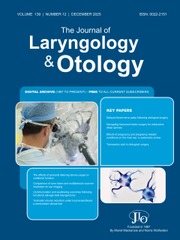No CrossRef data available.
Article contents
Appropriate inhaler formulations following tracheostomy or laryngectomy in patients with respiratory co-morbidities: a cohort study
Published online by Cambridge University Press: 04 November 2025
Abstract
Currently, there is no guideline to support the conversion of inhaled medications to formulations suitable for patients undergoing tracheostomy or laryngectomy. This study aimed to evaluate prescribing practices and post-operative respiratory complications.
The first cycle of this cohort study (1 October 2018 to 28 February 2022) examined existing practice, while the second cycle (1 August 2023 to 31 July 2024) assessed the impact of a newly introduced prescribing tool. The primary outcomes were the proportion of patients prescribed appropriate inhaler formulation and the incidence of post-operative respiratory complications, stratified by formulation appropriateness.
Our study demonstrated the tool improved appropriate formulation prescribing from 45 per cent to 60 per cent. In both cycles, patients receiving appropriate formulations had fewer post-operative respiratory complications.
A prescribing tool to facilitate formulation conversion was associated with improved prescribing practices and reduced complications, supporting the need for structured guidance in this high-risk population.
Keywords
Information
- Type
- Main Article
- Information
- Copyright
- © The Author(s), 2025. Published by Cambridge University Press on behalf of J.L.O. (1984) LIMITED.
Footnotes
Ping Hei Alfie Lee takes responsibility for the integrity of the content of the paper.
Presented at the British Association of Head & Neck Oncologists (BAHNO) 2025 Annual Scientific Meeting, 16 May 2025, London.

